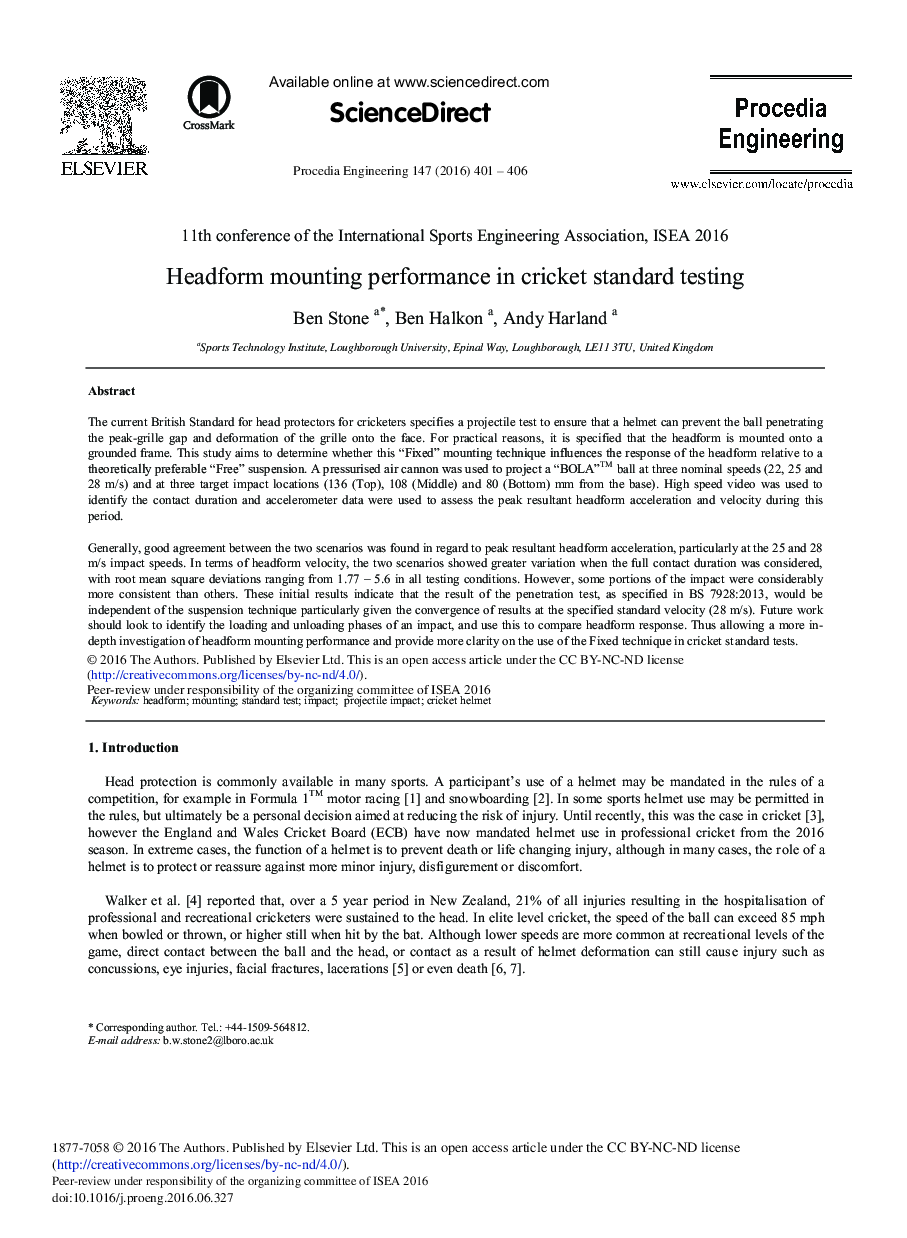| Article ID | Journal | Published Year | Pages | File Type |
|---|---|---|---|---|
| 853415 | Procedia Engineering | 2016 | 6 Pages |
The current British Standard for head protectors for cricketers specifies a projectile test to ensure that a helmet can prevent the ball penetrating the peak-grille gap and deformation of the grille onto the face. For practical reasons, it is specified that the headform is mounted onto a grounded frame. This study aims to determine whether this “Fixed” mounting technique influences the response of the headform relative to a theoretically preferable “Free” suspension. A pressurised air cannon was used to project a “BOLA”TM ball at three nominal speeds (22, 25 and 28 m/s) and at three target impact locations (136 (Top), 108 (Middle) and 80 (Bottom) mm from the base). High speed video was used to identify the contact duration and accelerometer data were used to assess the peak resultant headform acceleration and velocity during this period.Generally, good agreement between the two scenarios was found in regard to peak resultant headform acceleration, particularly at the 25 and 28 m/s impact speeds. In terms of headform velocity, the two scenarios showed greater variation when the full contact duration was considered, with root mean square deviations ranging from 1.77 – 5.6 in all testing conditions. However, some portions of the impact were considerably more consistent than others. These initial results indicate that the result of the penetration test, as specified in BS 7928:2013, would be independent of the suspension technique particularly given the convergence of results at the specified standard velocity (28 m/s). Future work should look to identify the loading and unloading phases of an impact, and use this to compare headform response. Thus allowing a more in-depth investigation of headform mounting performance and provide more clarity on the use of the Fixed technique in cricket standard tests.
